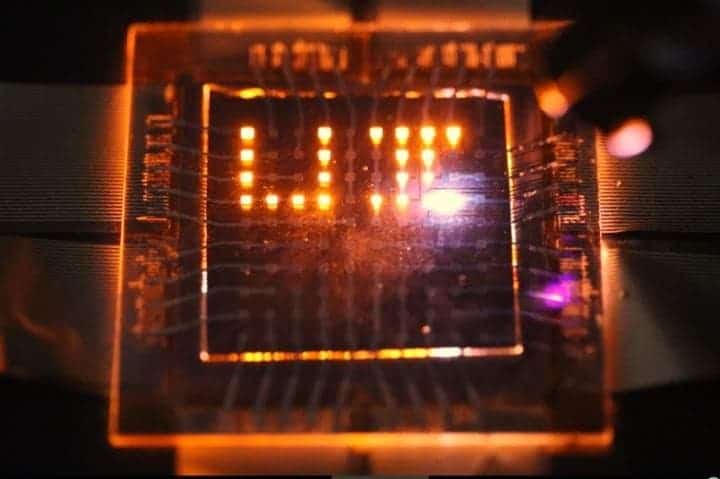
After Apple launched the iPhone exactly a decade ago, the way consumers interacted with their phones changed forever. In fact, today’s mobile devices seem to have strayed away from their voice call purpose. They’re more of a handheld computer than a phone. And while Apple didn’t invent the touchscreen, they were the first to embed it into a phone cost effectively and conveniently for the user. And the next generation of smartphones might include features that could once again radically change the way users interact with their phones.
Using tiny nanorod arrays arranged in a thin film, American researchers have demonstrated a class of LEDs that all at once can emit, sense, and respond to light. The researchers claim a smartphone’s display fitted with such LEDs could be used to interact with the device through gestures with no touching required. The LEDs can also act like a sort of solar panel by harvesting light enabling the device draw a small amount of its required power from the ambient light.
“These LEDs are the beginning of enabling displays to do something completely different, moving well beyond just displaying information to be much more interactive devices,” said Moonsub Shim, a professor of materials science and engineering at the University of Illinois at Urbana-Champaign and the leader of the study. “That can become the basis for new and interesting designs for a lot of electronics.”
Each tiny nanorod measures only 5 nanometers in diameter and is made of three types of semiconductors. One emits and absorbs visible light while the other two semiconductors control how charge flows through the bulk material. When these are combined, the LEDs can do some incredible things, but not at the same time. The semiconductors need to be switched on and off to each carry its function. Luckily, this can be done at a very high frequency — triple the standard refresh rate of a typical LED display. This means that while semiconductors might be busy switching on and off, a user won’t be able to notice.
In this nearly continuous operation, the LEDs can be programmed to automatically adjust their brightness in response to ambient light. I’ve always been bugged by how light reflects off my Kindle when I’m reading outside. My smartphone is even worse. Shim says that the LEDs he and colleagues developed could solve this inconvenience as these can adjust brightness on a pixel by pixel basis. For instance, if one corner if your device’s display is shadowed but the rest of the display is fully exposed to the sun’s rays, the LEDs can get dimmer in the shadow and brighter in the light. This way, the image is always uniformly constant in terms of lighting.
The nanorod arrays also respond to laser light. A display fitted with these LEDs could be controlled with a laser just like a stylus or your finger can control the touchscreen interface on a smartphone. This way, the device can respond to gestures or recognize objects, the researchers report in the journal Science.
Communication is also possible between each nanorod LED as these can interact with each other. Two LED arrays facing each other could communicate with as many bits as there are pixels in the screen. The transfer rate would be slower than other technologies like Bluetooth but the advantage is that communication can be run in parallel, rather than in series (bit by bit).
“We primarily interface with our electronic devices through their displays, and a display’s appeal resides in the user’s experience of viewing and manipulating information,” said study coauthor Peter Trefonas, a corporate fellow in Electronic Materials at the Dow Chemical Company. “The bidirectional capability of these new LED materials could enable devices to respond intelligently to external stimuli in new ways. The potential for touchless gesture control alone is intriguing, and we’re only scratching the surface of what could be possible.”
So far, only red LEDs have been tested. The plan is to demonstrate the same capabilities with red, blue, and green to have a full colour spectrum display. The researchers would also like to up the light-harvesting capabilities.






